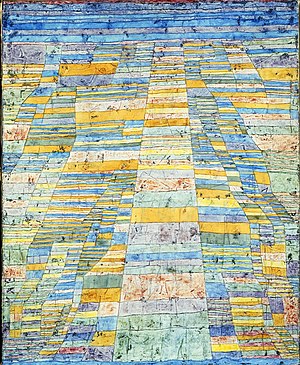SISSY Bitboards
Home * Board Representation * Bitboards * Sliding Piece Attacks * SISSY Bitboards
SISSY Bitboards (Split Index Super Set Yielding),
a new and interesting approach to determine sliding piece attacks devised by Michael Sherwin, introduced and discussed in CCC in February 2020 [2] as an improvement of his Sherwin Bitboards.
SISSY bitboards apply the occupancy lookup rank by rank to intersect supersets of the attack bitboards from the same square considering blocking pieces on that particular rank only.
While using eight lookups to intersect sounds expensive on the first glance, SISSY Bitboards yields up to eight ray-directions of a queen in one run with cheap instructions and high IPC potential, and thus may be an alternative for magic bitboards on architectures with slow 64-bit multiplication, in particular for the queen.
| Code samples and bitboard diagrams rely on Little endian file and rank mapping. |
Contents
Queen Attacks
The general SISSY attack getter requires a 3-dimensional 1MByte lookup table, with pre-initialized attack bitboards indexed by 3-bit rank index, 6-bit square, 8-bit rank occupancy.
U64 qss[8][64][256];
U64 queenAttacks(U64 occ, enumSquare sq) {
return
qss[0][sq][ occ & 255] &
qss[1][sq][(occ >> 8) & 255] &
qss[2][sq][(occ >> 16) & 255] &
qss[3][sq][(occ >> 24) & 255] &
qss[4][sq][(occ >> 32) & 255] &
qss[5][sq][(occ >> 40) & 255] &
qss[6][sq][(occ >> 48) & 255] &
qss[7][sq][(occ >> 56) & 255] ;
}
The following sample demonstrates how to determine queen attacks. The intersection of the eight split index addressed attack bitboards yields the desired queen attack bitboard (red squares attacked by queen, blue reset due to blocker):
| abcdefgh | ||
| 8 7 6 5 4 3 2 1 | ♚ ♛ ♟ ♟ ♟ ♟ ♞ ♕ ♘ ♙ ♙ ♙ ♔ ♙ | 8 7 6 5 4 3 2 1 |
| abcdefgh |
7k/q5p1/1p3p1p/2n5/3Q1N2/P1P5/1P1K2P1/8 w - - occ = 0x8041A20428054A00
[7][d4][0x80] [6][d4][0x41] [5][d4][0xA2] [4][d4][0x04]
. . . 1 . . . 1* . . . 1 . . . 0 . . . 1 . . . 0 . . . 1 . . . 1
1 . . 1 . . 1 . 1 . . 1 . . 1 .* 0 . . 1 . . 0 . 0 . . 1 . . 1 .
. 1 . 1 . 1 . . . 1 . 1 . 1 . . . 1 . 1 . 1 . .* . 0 . 1 . 1 . .
. . 1 1 1 . . . & . . 1 1 1 . . . & . . 1 1 1 . . . & . . 1 1 1 . . .*
1 1 1 Q 1 1 1 1 1 1 1 Q 1 1 1 1 1 1 1 Q 1 1 1 1 1 1 1 Q 1 1 1 1
. . 1 1 1 . . . . . 1 1 1 . . . . . 1 1 1 . . . . . 1 1 1 . . .
. 1 . 1 . 1 . . . 1 . 1 . 1 . . . 1 . 1 . 1 . . . 1 . 1 . 1 . .
1 . . 1 . . 1 . 1 . . 1 . . 1 . 1 . . 1 . . 1 . 1 . . 1 . . 1 .
[3][d4][0x28] [2][d4][0x05] [1][d4][0x4a] [0][d4][0x00]
. . . 1 . . . 1 . . . 1 . . . 1 . . . 1 . . . 1 . . . 1 . . . 1
1 . . 1 . . 1 . 1 . . 1 . . 1 . 1 . . 1 . . 1 . 1 . . 1 . . 1 .
. 1 . 1 . 1 . . . 1 . 1 . 1 . . . 1 . 1 . 1 . . . 1 . 1 . 1 . .
& . . 1 1 1 . . . & . . 1 1 1 . . . & . . 1 1 1 . . . & . . 1 1 1 . . .
1 1 1 Q 1 1 0 0* 1 1 1 Q 1 1 1 1 1 1 1 Q 1 1 1 1 1 1 1 Q 1 1 1 1
. . 1 1 1 . . . . . 1 1 1 . . .* . . 1 1 1 . . . . . 1 1 1 . . .
. 1 . 1 . 1 . . . 0 . 1 . 1 . . . 1 . 1 . 1 . .* . 1 . 1 . 1 . .
1 . . 1 . . 1 . 0 . . 1 . . 1 . 0 . . 0 . . 1 . 1 . . 1 . . 1 .*
. . . 1 . . . 0
0 . . 1 . . 0 .
. 0 . 1 . 1 . .
= . . 1 1 1 . . .
1 1 1 Q 1 1 0 0
. . 1 1 1 . . .
. 0 . 1 . 1 . .
0 . . 0 . . 1 .
Since queens may appear on file A and H with attacks on that outer files, a reduction of the occupancy index range due to the inner six bits is not possible for queens. We will elaborate on reducing occupancy index range possibilities for bishops and rooks later. However, for queens, one may skip the outer ranks if combined with a general rank lookup.
Union Bitboard
Rather then using shift/and instructions to get the rank-wise occupancies, and similar to Sherwin Bitboards, one may use a union of a bitboard and a struct or array of eight bytes (Portability concerning endianness is an issue), to appear the code looking simpler.
typedef unsigned char U08;
struct bb8 {U08 r1; U08 r2; U08 r3; U08 r4; U08 r5; U08 r6; U08 r7; U08 r8;};
union bbu {U64 b64; bb8 b08;};
U64 qss[8][64][256]; // 1M
U64 queenAttacks(U64 occ, enumSquare sq) {
bbu o; o.b64 = occ;
return
qss[0][sq][o.b08.r1] &
qss[1][sq][o.b08.r2] &
qss[2][sq][o.b08.r3] &
qss[3][sq][o.b08.r4] &
qss[4][sq][o.b08.r5] &
qss[5][sq][o.b08.r6] &
qss[6][sq][o.b08.r7] &
qss[7][sq][o.b08.r8];
}
Targeting X86-64, the generated assembly is likely similar to the above shift/and255 code [4].
queenAttacks(unsigned long long, int): # @queenAttacks(unsigned long long, int)
mov rdx, rdi
mov rcx, rdi
shr rcx, 56
movsxd rsi, esi
movzx edi, dl
shl rsi, 11
movzx eax, dh
mov rax, qword ptr [rsi + 8*rax + qss+131072]
and rax, qword ptr [rsi + 8*rdi + qss]
mov rdi, rdx
shr rdi, 13
and edi, 2040
and rax, qword ptr [rsi + rdi + qss+262144]
mov rdi, rdx
shr rdi, 21
and edi, 2040
and rax, qword ptr [rsi + rdi + qss+393216]
mov rdi, rdx
shr rdi, 29
and edi, 2040
and rax, qword ptr [rsi + rdi + qss+524288]
mov rdi, rdx
shr rdi, 37
and edi, 2040
and rax, qword ptr [rsi + rdi + qss+655360]
shr rdx, 45
and edx, 2040
and rax, qword ptr [rsi + rdx + qss+786432]
and rax, qword ptr [rsi + 8*rcx + qss+917504]
ret
Bishop Attacks
Taking advantage of the inner six bits optimization for SISSY bishop attacks, but still much memory and computation compared to other techniques:
U64 bss[6][64][64]; // 192 K
U64 bishopAttacks(U64 occ, enumSquare sq) {
return
bss[0][sq][(occ >> 9) & 63] & // 2nd rank
bss[1][sq][(occ >> 17) & 63] &
bss[2][sq][(occ >> 25) & 63] &
bss[3][sq][(occ >> 33) & 63] &
bss[4][sq][(occ >> 41) & 63] &
bss[5][sq][(occ >> 49) & 63] ; // 7th rank
}
There is a more recent attempt to half the number of lookups by Martin Sedlak but using much larger tables [5].
Rook Attacks
If combined with the rank lookup for SISSY fileAttacks only, one can dense the occupy index range to 2, considering only blockers on the same file.
U64 rss[6][64][2]; // 6K
U64 fileAttacks(U64 occ, enumSquare sq) {
occ >>= (sq & 7); // shift occupancy to A file
return
rss[0][sq][(occ >> 8) & 1] & // 2nd rank
rss[1][sq][(occ >> 16) & 1] &
rss[2][sq][(occ >> 24) & 1] &
rss[3][sq][(occ >> 32) & 1] &
rss[4][sq][(occ >> 40) & 1] &
rss[5][sq][(occ >> 48) & 1] ; // 7th rank
}
One may try some more index trickery for instance considering 3 ranks each, for an upper and lower half,
U64 rss[2][64][8]; // 8K
U64 fileAttacks(U64 occ, enumSquare sq) {
occ >>= (sq & 7); // shift occupancy to A file
return
rss[0][sq][((occ>>22)&4) | ((occ>>15)&2) | ((occ>> 8)&1)] & // rank 4,3,2
rss[1][sq][((occ>>46)&4) | ((occ>>39)&2) | ((occ>>32)&1)]; // rank 7,6,5
}
One step further, to combine the occupancy to one six-bit index is already quite similar to Kindergarten File Attacks, in particular Zach Wegner's 32-bit Version [6]
Forum Posts
- New RookAttacks() - possibly by Michael Sherwin, CCC, February 12, 2020
- Split Index Super Set Yielding (SISSY) Bitboards by Michael Sherwin, CCC, February 13, 2020
- Re: Split Index Super Set Yielding (SISSY) Bitboards by Michael Sherwin, CCC, February 13, 2021
- Re: Split Index Super Set Yielding (SISSY) Bitboards by Martin Sedlak, CCC, February 14, 2021
References
- ↑ Paul Klee - Hauptweg und Nebenwege, 1929, Wikimedia Commons, Museum Ludwig
- ↑ Split Index Super Set Yielding (SISSY) Bitboards by Michael Sherwin, CCC, February 13, 2020
- ↑ Queen's Star 2009 by Carina Jørgensen
- ↑ Compiler Explorer with x86-64 clang (experimental - Wlifetime), -O3
- ↑ Re: Split Index Super Set Yielding (SISSY) Bitboards by Martin Sedlak, CCC, February 14, 2021
- ↑ Zach's tricky 32-bit approach by Zach Wegner, Winboard Forum, August 22, 2006

